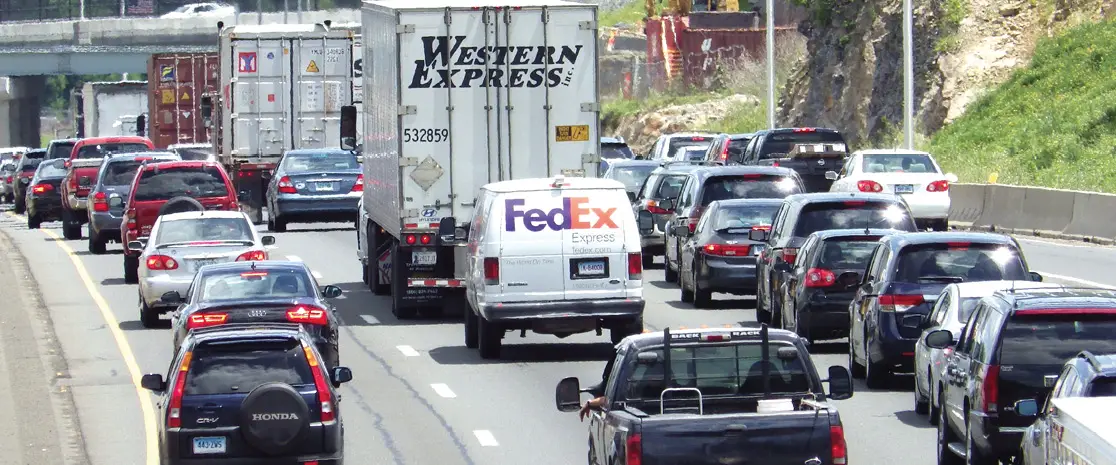Determining the future shape of Connecticut”™s transportation systems is a top priority for the Western Connecticut Council of Governments.
“This is a long-range planning process,” said WestCOG Executive Director Francis Pickering, “and it can sometimes be difficult to get people to come out to discuss projects that can be 30 years down the road.”
 WestCOG ”” which consists of more than a dozen municipalities in the region, including Bethel, Brookfield, Danbury, Darien, Greenwich, New Canaan, New Fairfield, Newtown, Norwalk, Redding, Ridgefield, Sherman, Stamford, Weston, Westport and Wilton ”” is, like all metropolitan planning organizations, required by federal law to prepare a long-range transportation plan (LRTP) every four years as a prerequisite for federal transportation funding.
WestCOG ”” which consists of more than a dozen municipalities in the region, including Bethel, Brookfield, Danbury, Darien, Greenwich, New Canaan, New Fairfield, Newtown, Norwalk, Redding, Ridgefield, Sherman, Stamford, Weston, Westport and Wilton ”” is, like all metropolitan planning organizations, required by federal law to prepare a long-range transportation plan (LRTP) every four years as a prerequisite for federal transportation funding.
But, Pickering noted, that plan is also required to identify both short- and long-term investments that can enhance the transportation system. Those strategies are required to be “fiscally constrained” and scheduled to be phased in over the following 25 years.
While trying to envision what transportation might look like circa 2048 may be a tall order ”” after all, in 1988 there were no ridesharing services, much less cell phones and apps ”” collecting data on where it could stand four years hence should be relatively easy.

But Pickering said WestCOG has always relied heavily on public input for the development of its LRTPs. As a result, it has scheduled public meetings in each of the 18 municipalities it serves, the most recent being in Stamford, Greenwich, Newtown, Redding and Bethel.
Total attendance, Pickering said: Zero.
WestCOG is also soliciting comments online, through social media posts and via its mailing list. “It”™s a broad-based strategy to engage the members of the public who are interested in participating,” Pickering said.
Absent a draft plan, some residents may feel the topic is too ephemeral to comment on. That, Pickering said, would be a mistake.
“We want to take a different approach before we start writing it, to give the public the opportunity to help guide the development of the plan before it is written,” he said. “This is designed to be a much more open process than has perhaps been the case in the past. We want to give the public the opportunity to get in on the ground floor, instead of being presented with something that”™s basically a fait accompli.”
With or without public involvement, Pickering said WestCOG expects to begin compiling the LRTP during late winter/early spring, with a draft version completed in March. A 45-day comment period will further allow for public input, with a final draft to be completed by late spring.
Once that draft is approved by the municipalities, the LRTP will be sent for final approval to the U.S. Department of Transportation.
Pickering noted that the LRTP is designed to deal with issues affecting major roadways, trains, bicyclists and pedestrians. “If someone”™s looking to add a traffic light at a specific intersection, that”™s not what this is for,” he said.
The state”™s infamous highway congestion will be addressed, he said, as will ways of improving mobility and the safety of cyclists and pedestrians.
“I can”™t speak to specific plans,” Pickering said. “But the congestion issues on I-95, I-84, the Merritt, Route 1 and Route 7 ”” those will probably be in there. And we will supply various solutions to address those problems. Would it take adding one lane, or two, in each direction on those roads?
“We”™re also looking at bus service, both locally and on an intracity basis like what you have with Peter Pan and Greyhound,” he continued. “Rail service on Amtrak, Acela and Metro-North, freight transportation when it comes to delivery trucks, semis and the railroads ”” basically everything except air and ship.”
Should an issue somehow fall through the cracks and not be included in the LRTP, Pickering noted that amendments can be made, though whether the federal government will come through with the necessary funding for such additions remains an open question.
He further said that trying to predict the future of transportation is always difficult. “We keep hearing about autonomous vehicles, self-driving cars,” Pickering said. “Will they be a significant presence in 30 years? Most likely, yes, but how?
“How people travel is driven by many factors,” he continued. “As technology matures, patterns change. We could end up in the future where everyone does nearly everything from home, which could mean they never leave home, or they go out more because they have more free time.”





















